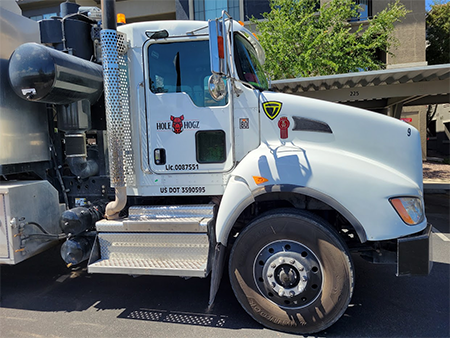The Science Behind A Hydrovac Truck
These are high technology machines.
Posted 05:38 July 25, 2025
Last Updated 05:38 July 25, 2025
 The science behind hydrovac trucks lies in their innovative use of fluid dynamics, vacuum technology, and material science to achieve precise, non-destructive excavation. Hydrovac trucks combine high-pressure water jets with powerful vacuum systems to break up soil and remove it efficiently, offering a safer alternative to mechanical digging tools. This technology is grounded in the principles of fluid mechanics and pressure differentials, enabling hydrovac trucks to excavate around sensitive underground utilities like gas lines or fiber optic cables without causing damage. As industries face increasing demands for safety and environmental responsibility, the scientific foundation of hydrovac trucks makes them a cornerstone of modern excavation, with the global hydrovac market projected to reach $1.5 billion by the end of 2025.
The science behind hydrovac trucks lies in their innovative use of fluid dynamics, vacuum technology, and material science to achieve precise, non-destructive excavation. Hydrovac trucks combine high-pressure water jets with powerful vacuum systems to break up soil and remove it efficiently, offering a safer alternative to mechanical digging tools. This technology is grounded in the principles of fluid mechanics and pressure differentials, enabling hydrovac trucks to excavate around sensitive underground utilities like gas lines or fiber optic cables without causing damage. As industries face increasing demands for safety and environmental responsibility, the scientific foundation of hydrovac trucks makes them a cornerstone of modern excavation, with the global hydrovac market projected to reach $1.5 billion by the end of 2025.
At the core of hydrovac trucks is the application of fluid dynamics through high-pressure water jets. These jets, typically operating at 1,000 to 5,000 psi, are propelled through specialized nozzles to break up soil into a slurry. The science here involves Bernoulli’s principle, where the high-velocity water stream reduces pressure at the point of impact, allowing the water to penetrate and fragment soil particles. Hydrovac trucks can adjust water pressure and temperature—sometimes heating water to 150°F—to tackle various soil types, from loose sand to dense clay or frozen ground. This controlled application of fluid force ensures that hydrovac trucks can excavate with precision, minimizing disturbance to surrounding soil and infrastructure compared to mechanical methods that risk utility strikes costing upwards of $100,000 per incident.
The vacuum system of hydrovac trucks relies on the principle of pressure differentials to remove the slurry created by the water jets. A powerful vacuum pump, generating airflow up to 6,000 cubic feet per minute, creates a low-pressure zone inside the truck’s debris tank, typically holding 1,000 to 3,000 gallons. This low pressure causes atmospheric air to rush into the tank, carrying the slurry through a flexible hose. The science of gas dynamics ensures efficient material transport, with the vacuum system designed to handle both liquids and solids, such as gravel or sludge. Some hydrovac trucks incorporate cyclone separators or shaker decks, leveraging centrifugal force and vibration to separate solids from liquids, enhancing waste management and reducing disposal costs.
Material science plays a crucial role in the durability and functionality of hydrovac trucks. The debris tanks are constructed from corrosion-resistant materials like stainless steel to withstand the abrasive slurry and occasional hazardous materials, such as chemical spills. The hoses and nozzles are engineered with high-strength polymers or alloys to endure high-pressure water and abrasive debris without degrading. These materials ensure that hydrovac trucks can operate reliably in harsh conditions, from desert soils in southern Nevada to frozen terrains, where heated water systems maintain performance. The integration of advanced sensors and digital controls in modern hydrovac trucks further optimizes their operation, using real-time data to adjust water pressure or vacuum power for maximum efficiency.
The environmental science behind hydrovac trucks enhances their appeal by minimizing ecological impact. By containing slurry in sealed tanks, hydrovac trucks prevent soil or water contamination, aligning with regulations from agencies like the U.S. Environmental Protection Agency. Water recycling systems in some hydrovac trucks reduce resource use, making the process sustainable. This scientific synergy of fluid dynamics, vacuum technology, and material durability allows hydrovac trucks to deliver precise, safe, and eco-friendly excavation, protecting infrastructure and reducing costs in industries facing complex underground challenges.
